A Brief Intro About Wall Putty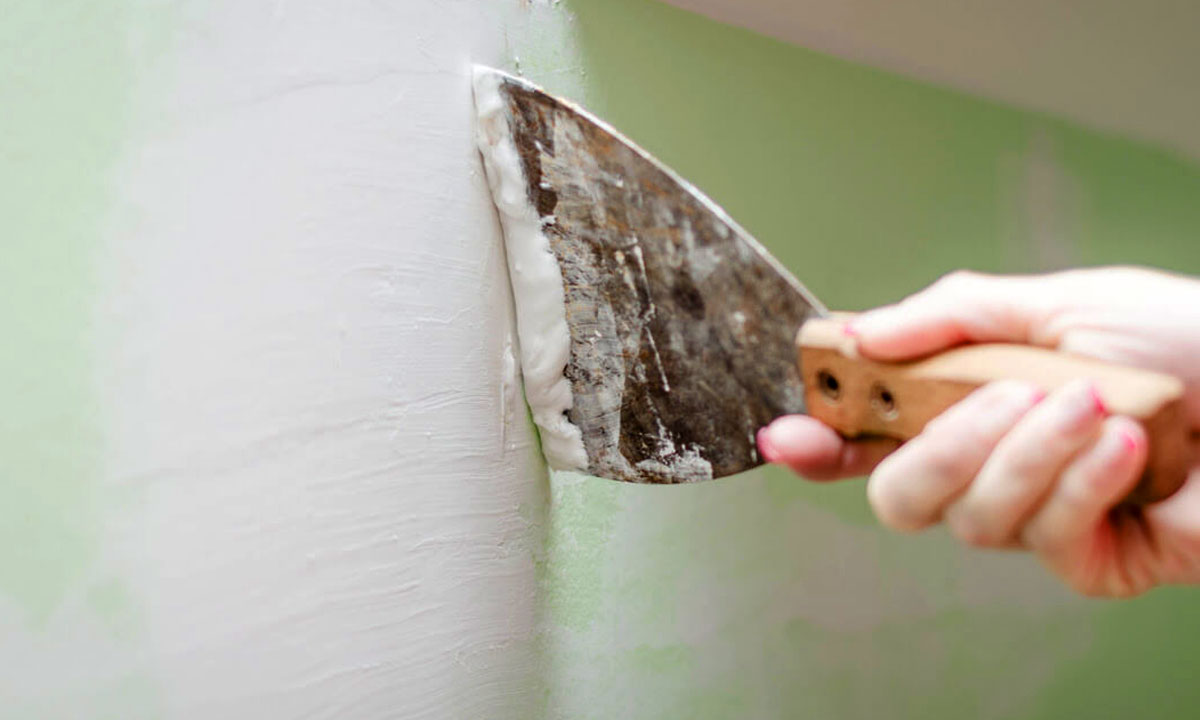
Every house owner desires a perfect paint finish on the walls of their home. Whether it’s on the interior walls of your home or on the exterior of your home, a perfect paint finish makes your home look classy and elegant. The best wall putty achieves this goal by creating a solid base and a smooth surface on which the paint can settle and form a perfect coat. Wall putty is a white cement-based powder that is applied by blending with water and, in some cases, other additives to produce a waterproof solution. It can be used to fill cracks, gaps and imperfections in walls when applied correctly.
Meaning of ‘Putty” - Best Wall Putty Brands in India
Firstly let us know what ‘Putty’ is all about. Putty is a white cement base coating that's basically like a plaster to a wall. It's like a type of plaster but not exactly a plaster. It's called a skin / skim coat. It's made up of a mix of cement and sand, and it's called lambi putty. The cement used is white cement made of calcium carbonate sand, which is nothing but white stone dust. The colour of the sand is different because of the silicon it contains. The cement-sand mix is mixed with a polymer that acts like a plaster.
Importance of Using Putty for Walls - Best Wall Putty Brands in India
Wall putty fills in the cracks, crevices, and other imperfections on the wall and creates a flat, smooth surface for your paint job. Wall putty is a type of putty used to cover the outside and inside of your house. It usually comes in two coats, one to fill in any cracks and gaps, and one to give a smooth finish. It's used on drywall, concrete, plaster, and other kinds of walls, and comes in a range of colours and consistency. Using putty on walls has many benefits like;
- Wall putty is a great way to give your walls a smooth, even finish.
- It makes your walls waterproof and holds moisture, plus it helps extend the life of any paint.
- It doesn't flake easily and can be used on both the outside and inside of your walls.
- It's great for fault-free, faulty, dry and wet, old and new surfaces.
Criteria for Selecting the Best Putty - Best Wall Putty Brands in India
Selecting the best putty depends on the specific requirements of your project or application. Putty is a versatile material used for various purposes, including filling gaps, sealing joints, and bonding surfaces. Here are some criteria to consider when choosing the best putty for your needs:
- Type of Putty:
- Wood putty - Used for filling holes, cracks, and gaps in wooden surfaces.
- Metal putty - Designed for repairing and bonding metal surfaces.
- Plastic putty - Suitable for filling and repairing plastic materials.
- Multi-Purpose putty - Versatile putties that can be used on various surfaces.
- Application:
Consider the intended use of the putty. Some putties are better suited for specific applications, such as automotive repairs, woodworking, plumbing, or general household use.
- Drying Time:
Different putties have varying drying times. Some dry quickly, allowing for faster completion of the project, while others may take longer to cure. Choose a putty that aligns with your project timeline.
- Hardness & Flexibility:
Consider the hardness and flexibility of the cured putty. Some applications may require a more rigid finish, while others may benefit from a more flexible or elastic result.
- Adhesion:
Check the adhesion properties of the putty. Ensure it bonds well with the material you're working on, whether it's wood, metal, plastic, or another substrate.
- Paintability & Stainability:
If you plan to paint or stain the repaired area, choose a putty that is compatible with your finishing materials. Some putties may not accept paint or stain well.
- Shrinkage:
Consider the shrinkage characteristics of the putty. Putties that shrink excessively as they dry may lead to cracks and an uneven surface.
- Water Resistance:
For outdoor or wet environments, choose a putty that offers water resistance to prevent deterioration over time.
- Temperature Resistance:
Consider the temperature range in which the putty will be used. Some putties may lose effectiveness or crack at extreme temperatures.
- Ease of Application:
Look for putties that are easy to work with, shape, and apply. Some putties come in convenient forms like sticks or tubes, while others may require mixing.
- Curing Mechanism:
Some putties cure through chemical reactions, while others cure by drying. Choose a curing mechanism that suits your project and environment.
- Cost:
Compare the cost of different putty options. While it's important to consider quality, the cost can be a factor in the decision-making process.
Top Putty Brands in India
Now let us go through some of the top best putty brands in India.
Birla Wall Putty
One of the best brands of wall putty is Birla because it can coat almost all types of walls. One of the best brands is Birla Wall Putty because it improves and strengthens your walls in terms of bonding, strength, covering, and water resistance. Birla Waterproof Wall Putty is also one of the top waterproof wall putty brands in India. Birla Wall putty is available in pack sizes ranging from 1 kg to 40 kg.
Sunkoll Wall Putty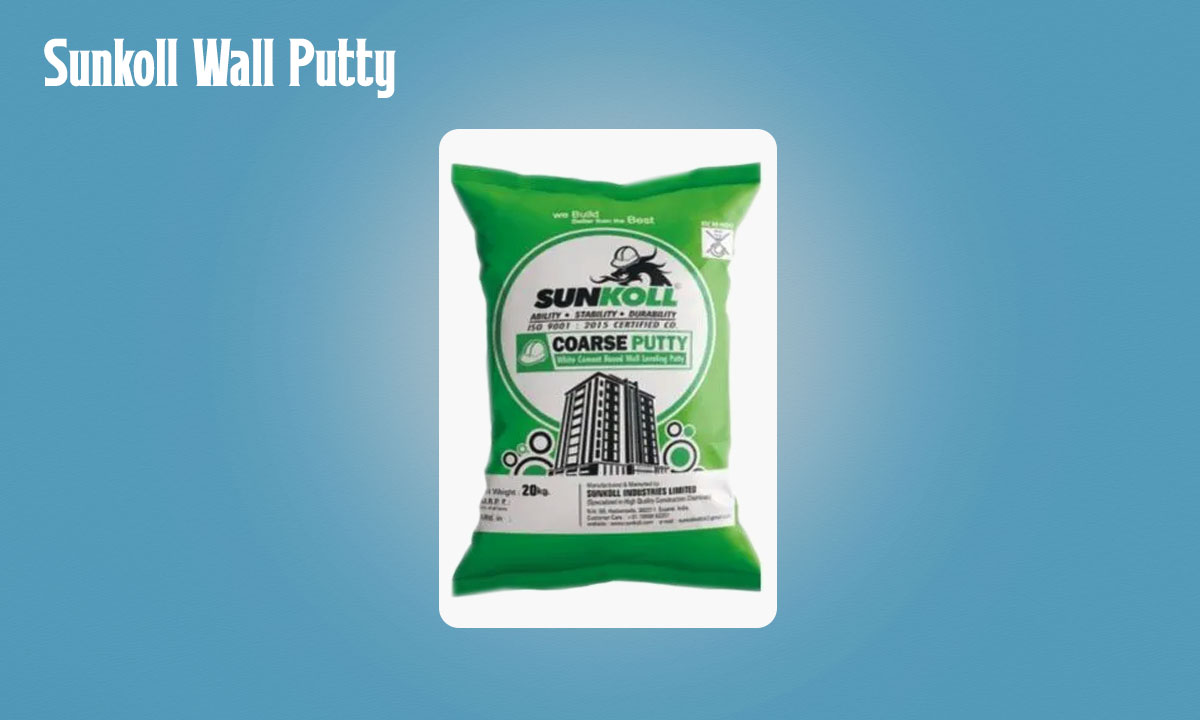
Sunkoll Wall Putty is another great choice for your wall. This brand is well-known and is safe to use in your home. Not only does this putty cover up all the marks on your wall, but it also gives a polished finish to your wall that makes it look like new if you’re renovating your home. One of the simplest ways to give your walls a shiny and smooth finish is with this putty. It prevents the paint from glazing over and keeps it moisture-free. Sunkoll Wall Putster is a high-performance chemical-based putty made from white cement and polymers. It’s suitable for both dry and wet surfaces. This putty has features like: Water resistance UV resistance Strong bonding Smooth finish Excellent workability
JK Wall Putty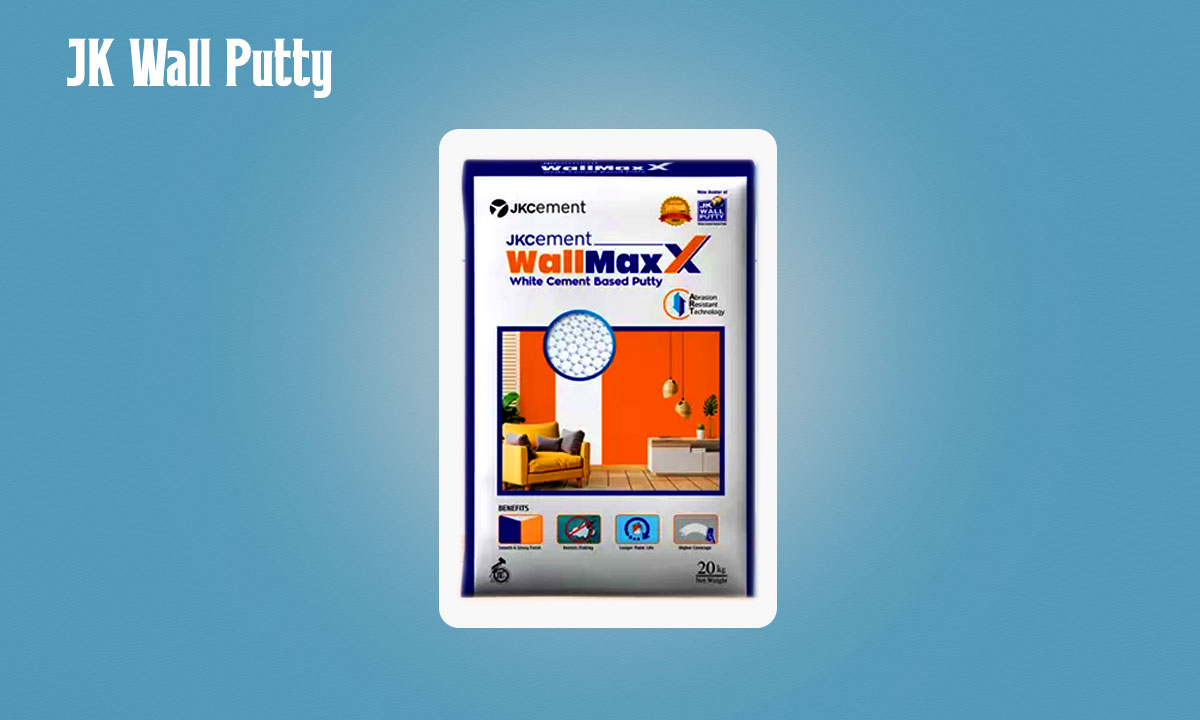
JK is one of India's leading manufacturers of high quality putty. If you're looking for an alkaline resistant paint or primer, then you can't go wrong with JK's wall putty. It offers a smooth, uniform finish and a quick and impressive setting time. It helps in the quick completion of the paint job and provides a long-lasting paint finish. JK's JK Cement Shield MaxX is one of the best quality waterproof wall putty available in India. It's a white cement based waterproof putty with active SiH4 molecules. These molecules protect your walls from moisture. The putty comes in a ready to use package, making it suitable for both indoor and outdoor use.
Asian Paints Trucare Wall Putty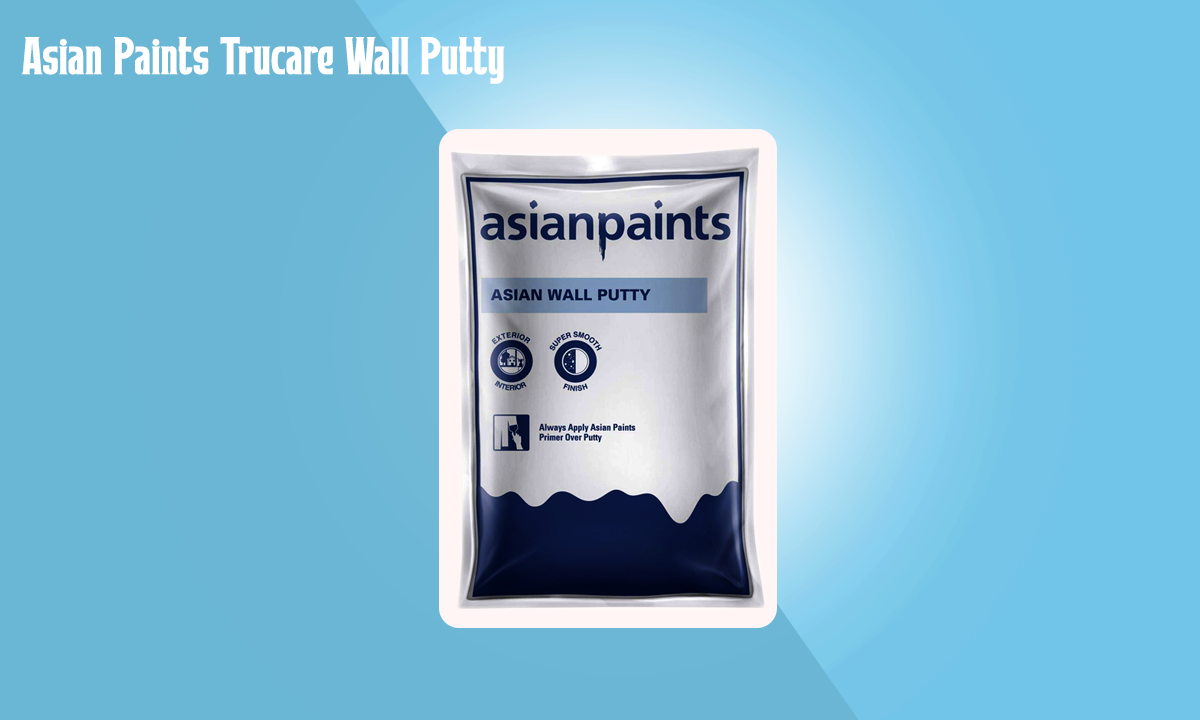
Asian Paints is one of the top brands of wall putty in India. The company is based in Mumbai and has a long-standing track record of providing quality products to customers all over the world. In addition to wall putty and other construction materials, the company also offers other top-quality products. The Asian Paints wall putty Asian Trucare is an ideal choice for both pre-built and painted walls. This putty is one of the finest products in the company's portfolio. It is made of 100% natural ingredients, with functional additives, and is redispersible. The result is a smooth finish that brings a new lease of life to your walls. It does not need to be cured with water, and it is easy to use. The putty also has great tensile strength and is water resistant.
Iris Wall Putty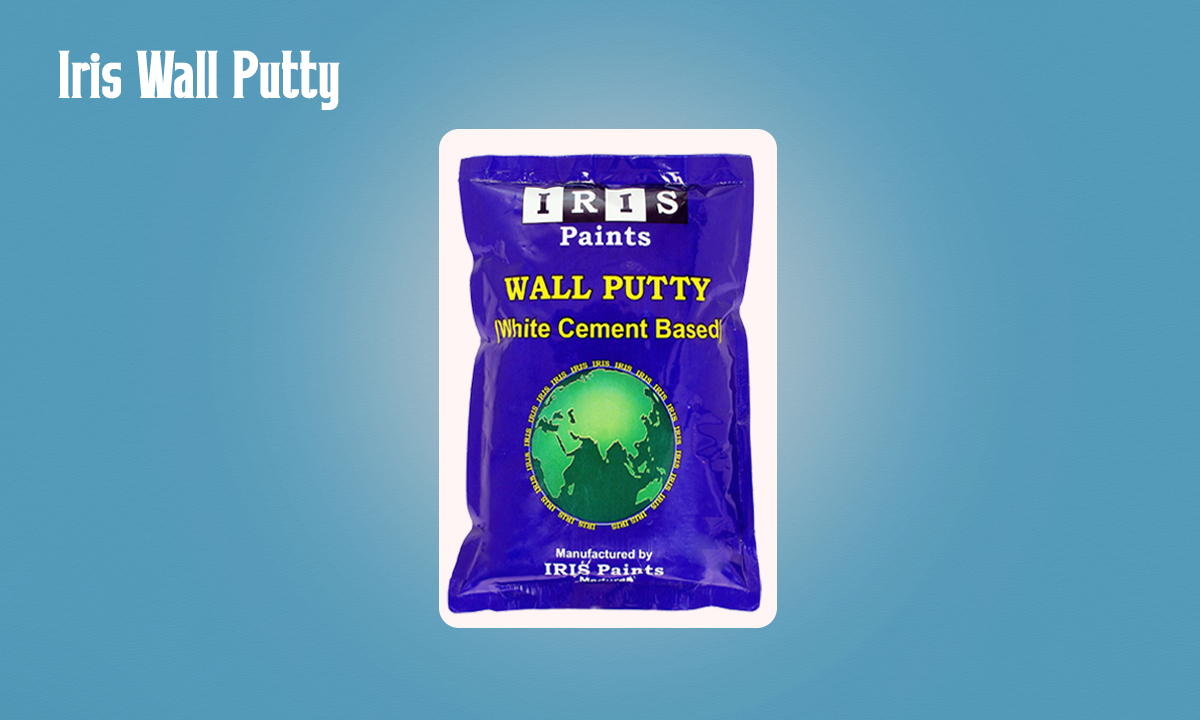
Iris wall putty is the best type of putty for exterior walls. It comes in unstructured form. If you want to remove any kind of irregularity from your walls, then Iris is the best choice for you. This white cement wall putty has a high-quality formulation. It does not require sanding and allows the paint to adhere correctly. This water-based putty comes in powder form too.
HomeSure Wall Putty
This wall putty makes it easy to get a smooth and white finish on walls and ceilings. It is made of a polymer specially designed for better spread and can be used on both plastered and mortar walls. This makes it one of the finest wall putty brands from India. This wall putty is a great addition to your walls. It is water-resistant, suitable for both outdoor and indoor use. It adheres to the base plaster easily and quickly. It also helps in protecting your walls from UV damage, so that your walls remain beautiful even after many years.
Dulux Wall Putty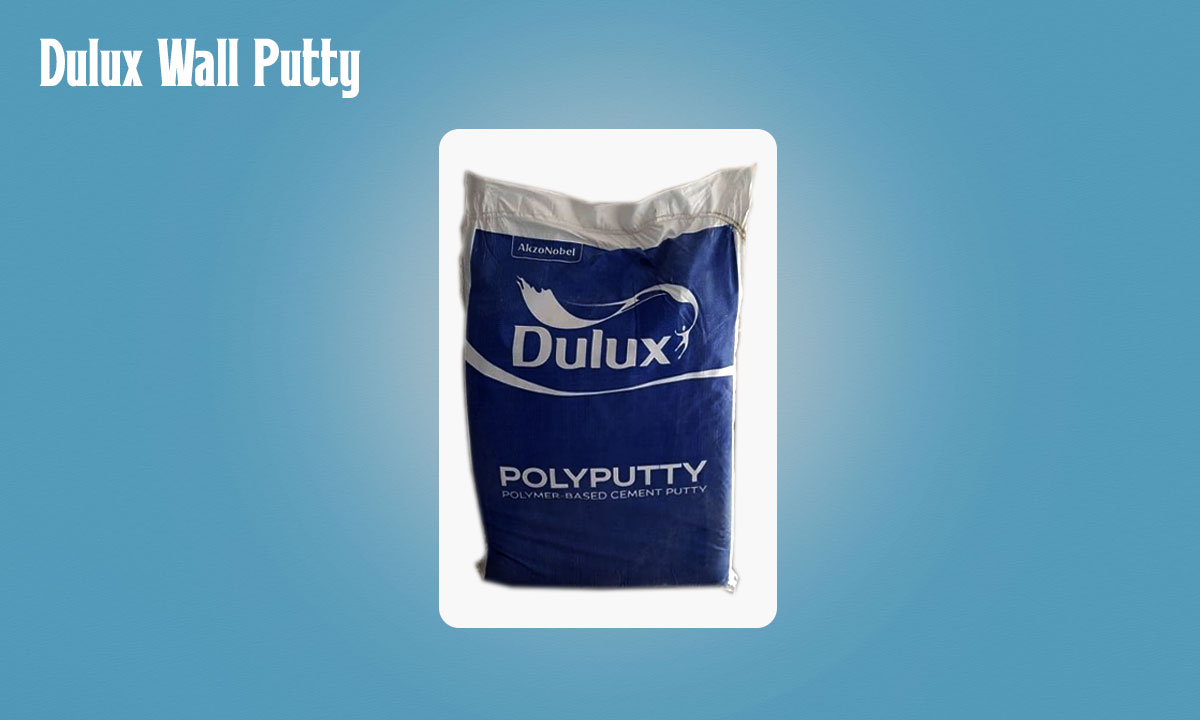
Dulux Acrylic Wall Putty can be used to leverage uneven surfaces and fill cracks and joints in your walls. It's easy to spread, and if you choose to take the tools and go at it yourself, you'll have a great time. This putty dries quickly and provides an outstanding finish and consistency to your walls.
Bird White Wall Putty
Bird white is another one of the top brands of wall putty in India. This brand is well-known for providing high-quality products and meeting the customer’s needs efficiently. This putty provides a great wall finish and looks amazing on your walls. This product is made of cement based synthetic material, which is proving to be a great foundation for the paint. While the quality of this product is outstanding, a few users have reported about the seepage problems when using this product. However, the overall product reviews are very good.
VV Wall Putty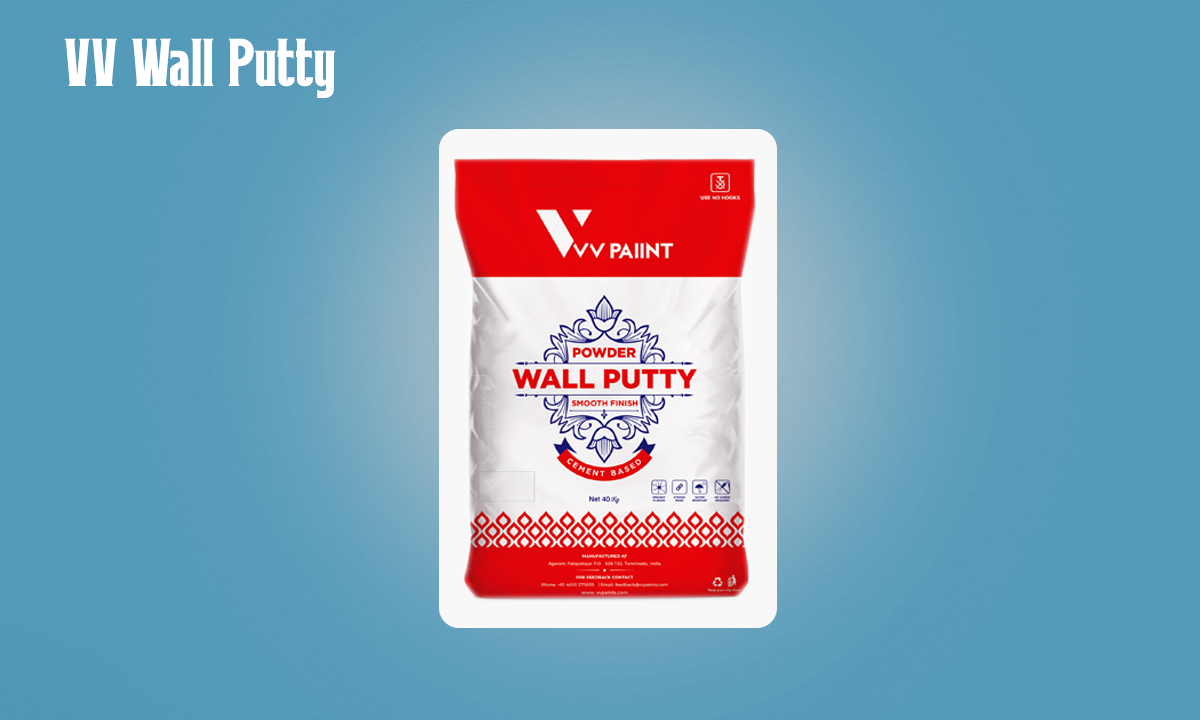
If you’re looking for a high-quality, long-lasting putty for your walls, VV is the perfect choice. It’s one of the top-rated wall putties for home use because it’s a water-based, pre-filled, ready-to-apply putty that’ll fill up dents and give your walls a finished look. Designed to fix minor surface imperfections, it’s only suitable for indoor use. VV wall putties also give your walls a brilliant shine.
Super Simco Plus Wall Putty
This white cement-based-putty is used as a protective base for high-priced paints. The water-resistance properties of this putty keep the paint from tarnishing even when the wall is wet. This putty is specially formulated to prevent the formation of cracks and pores on the ceiling and walls. Simco Wall Putty is suitable for both indoor and outdoor walls. It can be used to repair holes and crack in walls and keep them looking new for years to come.
AtoZ Wall Care Putty
AtoZ produces India's finest wall putty. It is designed to be applied to plastered walls, as well as uniformed surfaces, for the purpose of painting walls. This putty is formulated to cover hairline cracks, pores, and other areas of the wall that prevent water from seeping in or absorption prior to painting. Furthermore, it is cost-effective and aesthetically pleasing.
Dr. Fixit Wall Putty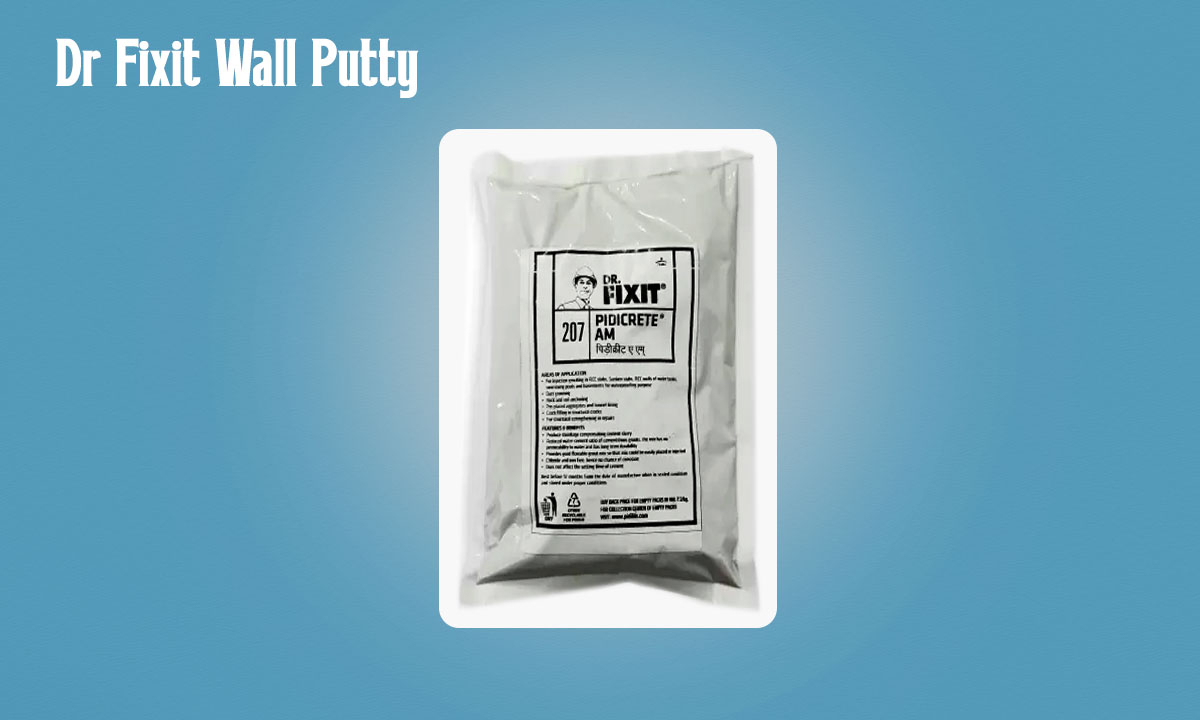
If you're looking for a waterproofing solution for your interiors or exterior walls, Dr. Fixit Wall Putty is the way to go. Dr. Fixit wall putty comes from the home of Pidilite Industries Limited. It's made with the latest technology and meets international standards. Plus, it's eco-friendly, so you don't have to worry about polluting the environment. The best part about Dr. Fixit is that it comes in a variety of formulations, some of which are ready-to-use and don't need to be mixed with any additives. That makes it the perfect choice for home applications, as it gives your walls an attractive finish, fills up big cracks, and keeps leakages at bay.
Nerolac Wall Putty
Like Asian Paints, Nerolac is also a well-known brand in India and has earned the title of the best wall putty in the country. Thanks to the company's continuous research and development efforts, Nerolac's wall putty can be used on all types of walls and provides a butter-like texture to your walls. The company's technology enhances the strength and flexibility of the putty, making it more durable. The putty does not have an unpleasant smell. There are no primer application requirements. It is Green pro certified. It can be used on new and old walls and ceilings.
Trimurti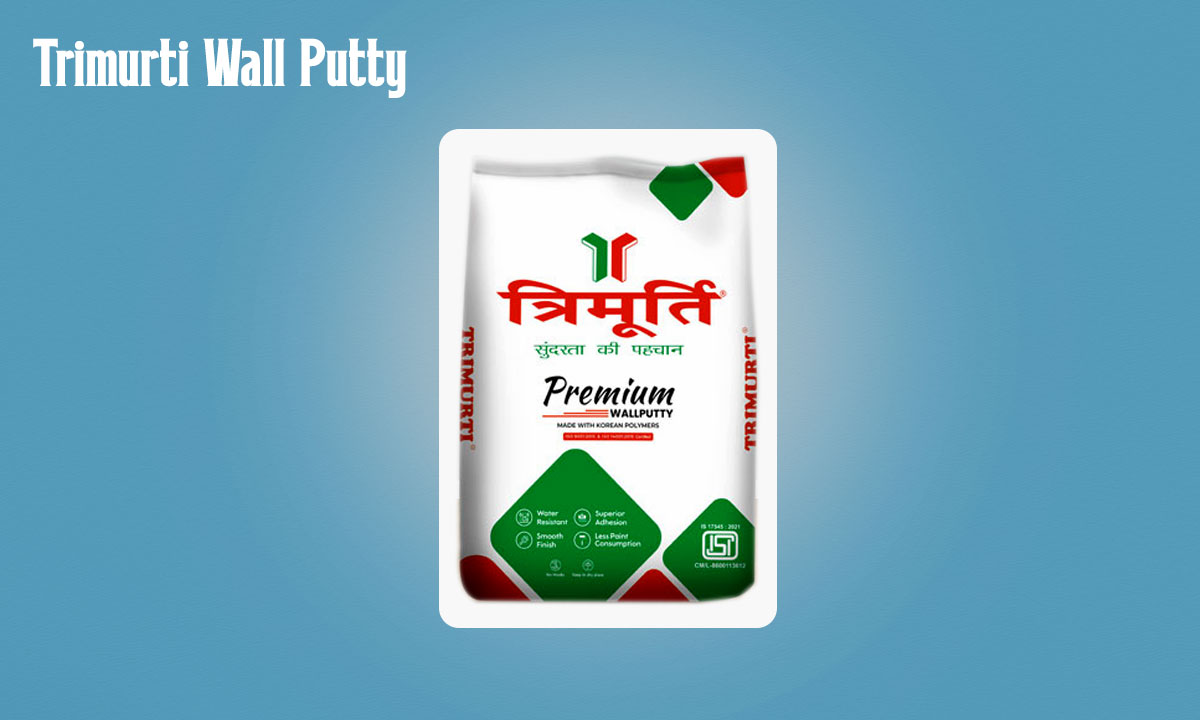
Introduced in 2004, the company has established itself as one of the best-known wall putty brands in India. It sells a wide range of products, such as plasters, coatings, and more. It has been awarded a global Excellence Award for producing North Indian wall and POP putties of the highest quality. There are three types of wall putties offered by the company: exceptional, professional and premium. The company defines these three types as follows: Superior - White powdery - Based on Gypsum plaster Professional - Expert - Made using German polymers Premium - White cement - Based on Korean polymers All three types meet their respective objectives.
How to Choose a Wall Putty? Best Wall Putty Brands in India
You should have come to know by now how beneficial it is to use wall putty by going through the blog. But, what is the best way to choose a wall putty? Below mentioned are some of the pointers to assist you in this regard.
- Waterproof Wall Putty
When it comes to wall putty, you want to make sure you're protecting your walls from heavy rain or moisture. That way, your paint and walls will last longer. You can use this type of putty for both indoor and outdoor walls, and it's made from a combination of silicone and white cement that makes it waterproof. Plus, it's free from any mercury, lead, or chromium compounds.
- Wall Paint Colour Should be Kept in Mind
Wall putties come in a variety of colours, including dark acrylic and tight tone. When selecting a colour for your wall putty, make sure you choose either white or a colour that matches your wall so that there is no mismatch.
- Be Specific About Wall Putty
There are many different types of wall putty available in the market, so it is important to select the one that is suitable for your particular wall type. Wall putty is available for both indoor and outdoor walls, so keep this in mind. For example, for the exterior walls, select a putty that is made of polymer and is finished with white cement to smooth out the rough texture.
- Smoothening Extremely Rough Walls
If your walls are very rough, opt for a putty made of redispersal polymer with white cement to control the water vapour and achieve a smooth finish.
Proper Application Techniques For Best Results - Best Wall Putty Brands in India
Applying putty properly is crucial for achieving the best results in your project. Whether you're filling gaps, repairing surfaces, or smoothing out imperfections, here are some proper techniques to follow when applying putty.
- Surface Preparation:
Start with a clean and dry surface. Remove any loose particles, dirt, grease, or old paint from the area where you plan to apply the putty. A clean surface ensures better adhesion.
- Select the Right Putty:
Choose a putty that is suitable for the type of material you're working with (wood, metal, plastic, etc.) and the specific requirements of your project.
- Mixing (if applicable):
If you're using a two-part putty that requires mixing, follow the manufacturer's instructions carefully. Ensure that the components are mixed thoroughly and evenly.
- Apply in Thin Layers:
Apply the putty in thin layers rather than in one thick layer. This helps with better adhesion, reduces drying time, and minimises the risk of cracking.
- Use the Right Tools:
Depending on the size of the area and the type of putty, use appropriate tools such as putty knives, spatulas, or your fingers for small repairs. Ensure your tools are clean to achieve a smooth finish.
- Feathering:
Feather the edges of the putty to blend it seamlessly with the surrounding surface. This prevents noticeable lines or bumps once the putty is dry.
- Smooth & Shape:
While the putty is still pliable, use a putty knife or a wet finger to smooth and shape the putty. This helps achieve a neat and professional-looking finish.
- Remove Excess Putty:
Remove any excess putty before it fully cures. This can be done using a putty knife or a damp cloth, depending on the putty type. Be careful not to disturb the surrounding area.
- Sand for Smoothness:
Once the putty is completely dry, sand the repaired area to achieve a smooth and even finish. Use fine-grit sandpaper to avoid scratches.
- Prime & Paint (if applicable):
If your project involves painting, prime and paint the repaired area according to the manufacturer's recommendations. Some putties may require priming before painting.
- Follow Manufacturers Instructions:
Always follow the specific instructions provided by the putty manufacturer. This includes information on drying time, curing conditions, and any additional steps for optimal results.
- Clean Tools Promptly:
Clean the tools immediately after use. Putty can harden quickly, making it difficult to remove once cured.
- Practice Patience:
- Allow sufficient time for the putty to dry and cure as per the manufacturers recommendations. Rushing the process may lead to a less-than-ideal finish.
Cost Effectiveness and Value for Money - Best Wall Putty Brands in India
Putty can contribute to cost-effectiveness and value for money in various ways, depending on the specific application and requirements of your project. Here are several ways in which putty can be a cost-effective solution:
- Surface Repair and Restoration:
Putty is commonly used for repairing and restoring surfaces, such as filling in holes, cracks, or imperfections. By using putty to fix minor damages, you can avoid the need for more extensive and costly repairs or replacements.
- Material Savings:
Putty often comes in various forms, such as paste, sticks, or tubes. This allows for precise application, minimising material wastage. You can apply putty only where needed, reducing the overall material costs.
- DIY Repairs:
Putty is user-friendly and often suitable for do-it-yourself (DIY) projects. By handling minor repairs on your own, you can save on labour costs that would otherwise be incurred by hiring professionals.
- Versatility Across Surfaces:
Many types of putty are versatile and can be used on different surfaces, such as wood, metal, plastic, and more. This versatility means you may only need one type of putty for various projects, reducing the need to purchase multiple specialised products. Isn’t that a cost saving for you and for your project.
- Preventing Further Damages:
Addressing small issues with putty promptly can prevent them from escalating into more significant problems. This preventative approach can save money by avoiding the need for extensive repairs or replacements in the future.
- Extended Lifespan of Materials:
Putty can help extend the lifespan of materials by repairing and reinforcing surfaces. This can be particularly cost-effective in applications where the longevity of the material is crucial, such as in construction or automotive repairs.
- Customisable Solutions:
Putty can be tailored to specific needs by selecting the appropriate type for the material and purpose. This customisation ensures that you invest in a product that meets the exact requirements of your project, avoiding unnecessary expenses.
- Easy Applications & Time Saving:
The ease of application and quick drying times of certain putties can lead to time savings. Reduced labour hours translate to cost savings, especially in projects where time is a critical factor.
- Economical Sealing & Bonding:
Putty is often used for sealing joints and bonding surfaces. Choosing the right putty for these applications can provide a cost-effective solution compared to other sealing or bonding methods.
- Availability of Affordable Options:
Putties are available at different price points, and there are often affordable options without compromising quality. This allows you to choose a product that fits your budget while still meeting your project requirements.
Innovations and Technology Advancements - Best Wall Putty Brands in India
Here are some general trends and potential innovations that could be applied to putty manufacturing industries.
- Nano-Material Integration:
Incorporating nanotechnology into putty formulations can enhance their properties. Nanoparticles could be added to improve strength, flexibility, and adhesion, making the putty more versatile and efficient.
- Smart Materials:
Research in smart materials could lead to putty formulations that respond to environmental conditions or external stimuli. For example, putty that changes colour when exposed to certain chemicals or putty with self-healing properties.
- Sustainable Formulations:
With an increasing focus on sustainability, manufacturers might explore environmentally friendly materials for putty production. This could involve using bio-based ingredients, reducing energy consumption during manufacturing, or developing biodegradable putties.
- Advanced Adhesive Technologies:
Putties often serve as adhesives in various applications. Advancements in adhesive technologies, such as improved bonding strength, quicker curing times, and resistance to extreme conditions, could be integrated into putty formulations.
- Smart Manufacturing Process:
Incorporating automation and IoT (Internet of Things) technologies into the manufacturing process can lead to more precise control over quality, reduce waste, and enhance overall efficiency.
- Customisation for Specific Industries:
Tailoring putty formulations to meet the specific needs of industries like automotive, construction, electronics, or healthcare could lead to more specialised and high-performance putty products.
Sustainable & Eco-Friendly Options
Developing sustainable and eco-friendly putty options is a crucial step in minimising the environmental impact of construction and related industries. Here are some considerations and potential features for sustainable putty:
- Bio-Based Ingredients:
Utilise renewable resources and bio-based raw materials for putty formulations. This could include plant-based resins, natural oils, or other organic compounds.
- Recycled Content:
Incorporate recycled materials into putty formulations. This might involve using post-consumer recycled content or repurposing waste materials from other industries.
- Biodegradability:
Aim for putty formulations that are biodegradable, ensuring that they break down naturally over time and do not contribute to long-term environmental pollution.
- Water-Based Formulations:
Develop water-based putty formulations as an alternative to solvent-based options. Water-based putties typically have lower environmental impact and are safer for both workers and end-users.
- Closed-Loop Manufacturing:
Implement closed-loop manufacturing processes to minimise waste generation. This involves recycling and reusing by-products within the manufacturing process.
- Use Energy-Efficient Process:
Focus on energy-efficient manufacturing processes to reduce the overall carbon footprint of the putty production. This might involve optimising production lines, using renewable energy sources, or improving energy efficiency in transportation.
- Longevity & Durability:
Formulate putties with an emphasis on durability and longevity. A longer lifespan reduces the need for frequent replacements, contributing to resource conservation.
- Packaging Considerations:
Opt for eco-friendly packaging options, such as recycled or biodegradable materials. Minimise excess packaging and consider packaging alternatives that can be easily recycled or reused.
- Local Sourcing:
Source raw materials locally to reduce the environmental impact associated with transportation. Supporting local suppliers also contributes to regional sustainability.
User Friendly Features of Putty - Best Wall Putty Brands in India
- Easy Application:
Develop putty formulations that are easy to apply and spread. The consistency should be smooth, allowing for effortless application on various surfaces.
- Quick Drying & Curing
Users appreciate putties that have reasonable drying or curing times. Formulations that offer quick settings without compromising quality can save time and expedite the completion of projects.
- Non-Toxic & Low Odour
Create putty products with low or no volatile organic compounds (VOCs) to ensure a healthier environment for users. Minimising strong odours enhances user comfort, especially for indoor applications.
- Colour Options:
Offer a variety of colour options to match different surfaces. This allows users to choose putty that seamlessly blends with their existing materials, reducing the need for additional finishing steps.
- Sandable & Paintable:
Formulate putty that is easy to sand and paint, providing users with flexibility in achieving a smooth and finished appearance. Compatibility with common primers and paints is a user-friendly feature.
- Versatility:
Design putty formulations that can be used on multiple surfaces, such as wood, metal, or concrete. A versatile putty product reduces the need for users to purchase different types for various applications.
- Stain Resistance:
Incorporate stain-resistant properties into putty formulations to make cleaning and maintenance easier for users. This is particularly important in applications where the putty may be exposed to potential staining substances.
- Long Shelf Life:
Ensure that putty products have a reasonable shelf life, retaining their quality over time. Users appreciate products that can be stored for an extended period without degradation.
- Easy Clean-Up
Develop putty products that are easy to clean up after application. Water-based putties, for example, can often be cleaned with water, reducing the need for harsh solvents.
Putty and its Compatibility With Paints: Best Wall Putty Brands in India
The compatibility of putty with paints is an important consideration, especially in construction, and various other applications where putty is commonly used as a filler or adhesive. Here are key factors to ensure compatibility between putty and paints:
- Paint Adhesion
The putty should provide a surface that promotes good adhesion for the paint. Ensure that the putty formulation allows the paint to adhere securely without peeling or cracking over time.
- Sandability
Putty should be easy to sand to achieve a smooth and even surface. This is essential for creating a suitable base for paint application. The sanded surface should promote proper paint adhesion and minimise imperfections.
- Primer Compatibility
Some putties may require a primer before painting, while others may not. Check the product specifications to determine whether the putty requires a specific primer for optimal paint adhesion.
- Drying or Curing Time
Consider the drying or curing time of the putty. Some paints may require a certain level of hardness or dryness in the putty before application. Quick-drying putties are convenient for users looking to finish projects efficiently in a quick span of time.
- Paint Type Compatibility
Different paints have varying formulations, and their compatibility with putty may vary. Ensure that the putty is compatible with the type of paint you intend to use, such as latex, oil-based, enamel, or acrylic paints.
- Stain Blocking
If the putty is used for repairing areas prone to stains, such as water damage or rust, it's beneficial if the putty has stain-blocking properties. This prevents stains from bleeding through the paint over time.
- Flexibility
Consider the flexibility of the putty, especially in applications where the painted surface may experience movement or expansion. A flexible putty can help prevent cracks in the paint layer over time.
- Colour Matching
Some putties are available in different colours, allowing users to choose a shade that closely matches the final paint colour. This reduces the visibility of the putty repair and minimises the need for extensive priming or multiple paint layers.
- Water-Based vs. Solvent-Based Putty
The base of the putty (water-based or solvent-based) can impact its compatibility with certain paints. Water-based putties are often more compatible with water-based paints, while solvent-based putties may be better suited for solvent-based paints.
Certifications and Standards for Putty - Best Wall Putty Brands in India
- Bureau of Indian Standards (BIS)
BIS is the national standards body in India. The relevant standard for putty and similar products may fall under the BIS standards for adhesives and sealants. For specific standards related to putty, you may need to refer to the BIS website or contact BIS directly.
- IS 10262
This is a standard by BIS titled "Code of practice for concrete mix proportioning." While not directly related to putty, it is relevant for construction practices, and some guidelines may impact the use of putty in construction applications.
- VOC Emission Standards
India may have specific regulations or guidelines concerning the emission of volatile organic compounds (VOCs) from construction products, including putty. Compliance with these standards ensures environmental safety.
- Green Building Standards
Certifications such as the Indian Green Building Council's (IGBC) Green Building Rating System (LEED India) may provide guidelines for environmentally friendly construction materials, potentially impacting the choice of putty.
- National Building Code (NBC)
While not a certification, the National Building Code of India provides guidelines and standards for building construction. It may have recommendations or requirements related to the use of certain construction materials, including putty.
- ISO Standards
Some ISO standards, such as those related to sealants and adhesives, may be relevant for putty products in India. ISO standards are often considered in the absence of specific national standards.
- Consumer Product Certifications
For consumer safety and product quality, certifications from organisations like the Bureau of Indian Standards (BIS) or other quality assurance bodies may be important though this may not be directly related to putty.
Application of Putty on Various Surfaces - Best Wall Putty Brands in India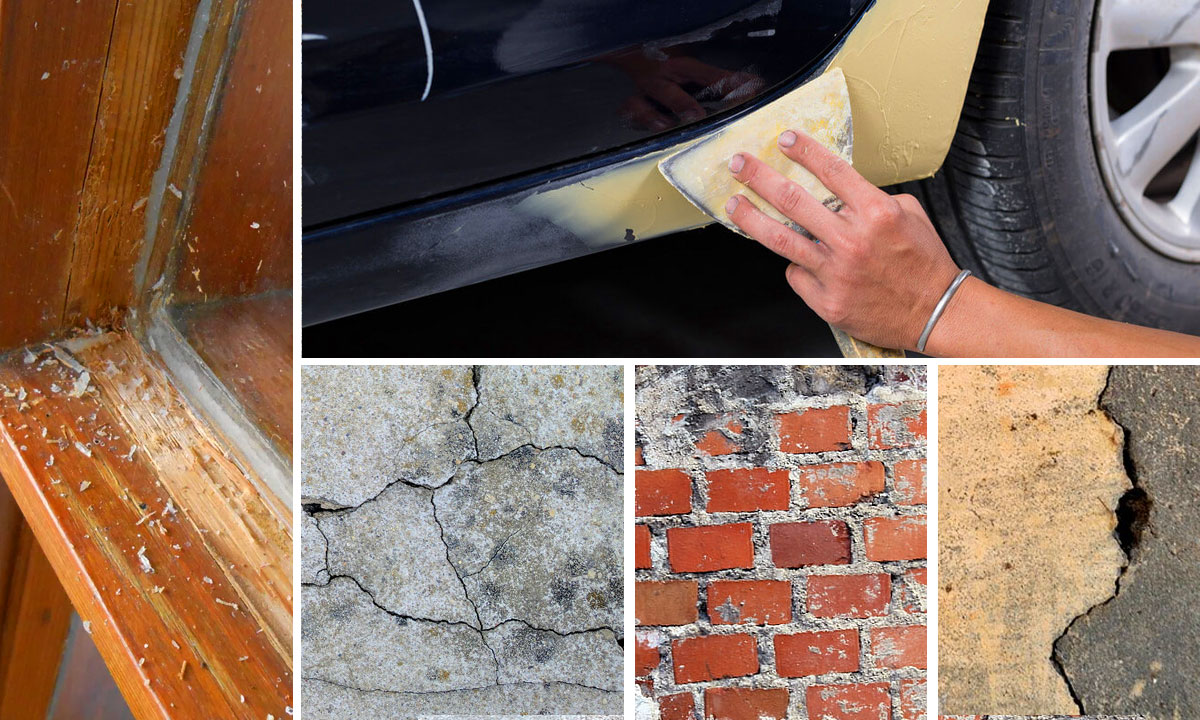
Putty is a versatile material commonly used for filling, smoothing, and repairing surfaces in various applications. The type of putty and its formulation can determine its suitability for different surfaces. Here are some common surfaces on which putty is applied:
- Wood Surfaces
Wood putty is specifically designed for repairing and filling imperfections in wooden surfaces. It is commonly used to fill nail holes, cracks, and gaps in wood before painting or finishing.
- Metal Surfaces
Metal putty, often formulated with metal fillers, is used for repairing dents, scratches, and other imperfections in metal surfaces. It can be applied to surfaces like car bodies, appliances, or metal furniture.
- Drywall and Plaster Surfaces
Drywall putty or joint compound is applied to seams, joints, and indentations in drywall and plaster surfaces. It is an essential material for achieving smooth and seamless walls before painting.
- Concrete Surfaces
Concrete putty or filler is used to repair cracks, holes, or surface irregularities in concrete walls, floors, or other structures. It helps create a smooth and even surface for further finishing.
- Masonry Surfaces
Putty can be applied to fill cracks and gaps in masonry surfaces, such as brick walls or stone structures. It helps improve the appearance and structural integrity of the surface.
- Window & Door Frames
Putty is commonly used in glazing applications for sealing and securing glass in window frames. Window putty is applied to create a weatherproof and secure seal.
- Automotive Surfaces
Auto body putty is used in the automotive industry to repair dents, dings, and other imperfections on vehicle surfaces. It is often applied to metal surfaces before painting.
- Furniture Repairs
Putty is utilised in woodworking for repairing furniture, filling cracks, nail holes, or gaps in wooden surfaces. Wood putty can be stained or painted to match the existing finish.
- Marine Applications
Marine putty is designed for use in boat repairs. It can fill gaps, repair hull damage, and address other issues in marine structures.
- Home Improvement
Putty is widely used in various DIY projects around the house. It can be applied to surfaces like walls, ceilings, and trim to fill holes, cracks, or gaps before painting.
- Exterior & Interior Walls
Putty is often applied to walls to repair imperfections before painting. It helps create a smooth and even surface for a professional finish.
- Ceramic and Tile Surfaces
Putty can be used to repair minor imperfections or cracks in ceramic or tile surfaces. Specialty putties designed for these applications may be available.
Tips For Readers on Using the Right Kind of Putty - Best Wall Putty Brands in India
Making decisions about choosing the right putty for a particular application can be crucial for the success of a project. Here are some encouraging considerations and tips for readers:
- Understand Your Surface
Take the time to understand the characteristics of the surface you're working with. Different surfaces require specific types of putty to ensure proper adhesion, flexibility, and durability.
- Identify the Purpose
Clearly define the purpose of using putty in your project. Whether it's filling gaps, repairing imperfections, or creating a smooth surface, knowing the intended purpose will guide you in selecting the right type of putty.
- Consider Environmental Factors
Take into account the environmental conditions to which the putty will be exposed. Factors such as temperature, humidity, and exposure to UV light can influence the performance of the putty over time.
- Read Product Labels
Carefully read product labels and specifications. This includes information on compatibility with different surfaces, recommended applications, drying or curing times, and any special considerations for use.
- Check Certifications and Standards
Look for putty products that comply with relevant certifications and standards. This ensures that the product meets quality, safety, and environmental requirements.
- Choose the Right Formulation
Different formulations of putty are designed for specific applications and surfaces. For example, wood putty for wooden surfaces, metal putty for metal surfaces, and so on. Choose a formulation that aligns with your project requirements.
- Prioritise Ease of Application
Opt for putty products that are user-friendly and easy to apply. This includes considerations such as smooth application, easy sanding, and compatibility with common paints and finishes.
- Consider Long Term Performance
Think about the long-term durability and performance of the putty. Consider factors like resistance to shrinkage, cracking, and environmental conditions to ensure that your repair or application will stand the test of time.
- Seek Professional Advice
If you're unsure about which putty to choose or how to use it, seek advice from professionals in the field. Consult with experts at hardware stores, read product reviews, or even reach out to the manufacturer for guidance.
- Perform Small Tests
Before applying putty on a large scale, conduct small tests in inconspicuous areas. This helps ensure compatibility with the surface and allows you to observe how the putty behaves before committing to a full application.
- Invest in Quality Products
While cost is a factor, investing in quality putty can save you time and effort in the long run. Quality products often have better adhesion, durability, and overall performance.
Best Wall Putty Brands in India
When it comes to achieving a flawless finish for your walls, choosing the right wall putty is crucial. In India, there are several brands that stand out for their superior quality and performance. This article explores the best wall putty brands in India that ensure your walls are smooth and beautiful.
Birla White Wall Care Putty
Birla White is a leading name in the wall putty segment. Known for its high-quality standards, Birla White Wall Care Putty provides excellent adhesion and a smooth finish. It is ideal for both interior and exterior surfaces, making it a versatile choice for homeowners and professionals alike.
JK Wall Putty
JK Wall Putty is another top contender in the market. This putty is renowned for its fine texture and superior binding properties. It ensures that your paint stays vibrant and lasts longer. JK Wall Putty is easy to apply and is resistant to moisture, making it perfect for humid conditions.
Asian Paints SmartCare Wall Putty
Asian Paints SmartCare Wall Putty is highly recommended for its premium quality. It offers a smooth, white surface that enhances the look of your paint. This putty is formulated to provide excellent coverage and durability, ensuring a long-lasting finish for your walls.
Acrylic Wall Putty by Berger Paints
Berger Paints' Acrylic Wall Putty is known for its excellent workability and quick drying time. It provides a smooth and durable base for painting, ensuring that your walls look impeccable. This putty is also resistant to flaking and cracks, making it a reliable choice.
Conclusion:
The walls of your home are the skeleton of the structure, while the paint is the skin that gives it its elegant and habitable appearance. Wall putty is a solution that eliminates the imperfections and improves the stickiness of the paint. Therefore, it is advisable to select the best brand of wall putty. There are various types of wall putty available in India, and we have listed the best brands in this article to help you make an informed decision.
Selecting the best putty brand in India involves considering various factors such as product quality, ease of application, surface compatibility, and long-term durability. While individual preferences and project requirements may vary, some reputed putty brands in India have consistently demonstrated excellence in these aspects.
In conclusion, when making decisions about the best putty brand for your needs, it's recommended to explore well-established brands known for their commitment to quality and customer satisfaction. Additionally, consider specific requirements of your project, such as the type of surface, environmental conditions, and intended purpose.
Always refer to product specifications, certifications, and user reviews for comprehensive insights. Popular putty brands in India often provide a range of formulations catering to different surfaces, ensuring versatility and reliability in a variety of applications. Ultimately, choosing a reputable putty brand aligns with the assurance of a successful and durable outcome for your construction or renovation projects.
Hope the above blog article about the best wall putty brands in India was helpful. The blog has explained in detail about the putty, their characteristics, features, applications and more. Hope you might have got a good idea on the topics covered in the article and cleared your doubts to a certain extent. Thanking you once again for showing your interest and patience in going through the blog article.
Sqft.expert is one of the leading house construction company based in Bangalore. We use the best wall putty brands in our construction process for enhanced durability and strength of the project.
FAQs for Best Wall Putty Brands in India
Q. What is wall putty, and why is it used?
A. Wall putty is a white cement-based material used for filling imperfections on walls and creating a smooth, even surface. It is applied before painting to enhance paint adhesion and improve the aesthetics of the wall.
Q. How does wall putty differ from POP?
A. Wall putty is a cementitious material that provides a smooth finish to walls and is ideal for painting. Plaster of Paris, on the other hand, is a gypsum-based material primarily used for moulding and sculpting.
Q. Can wall putty be applied on both interior and exterior walls?
A. Many wall putty brands offer formulations suitable for both interior and exterior walls. It's important to check the product specifications and choose accordingly.
Q. On what surfaces can wall putty be applied to?
A. Wall putty can be applied to a variety of surfaces, including concrete, plaster, brick, and wood. The key is to ensure that the surface is clean, dry, and free from dust and grease.
Q. How do I choose the best wall putty brand for my project?
A. Consider factors such as the type of surface, environmental conditions, ease of application, and drying time. Reading product reviews, checking certifications, and seeking professional advice can also guide your decision.
Q. Is it necessary to prime the wall before applying putty?
A. Priming is recommended before applying wall putty as it improves adhesion and ensures a smooth finish. Some wall putty brands may have specific guidelines regarding priming.
Q. Can wall putty be used to repair cracks and holes?
A. Yes, wall putty is commonly used for repairing minor cracks, holes, and surface imperfections. It helps create a uniform surface for painting.
Q. How long does it take for the wall putty to dry?
A. Drying times vary among different brands and formulations. Generally, it takes a few hours for wall putty to dry, but complete curing may take up to 24 hours or more.
Q. Can wall putty be tinted or coloured?
A. Some wall putty brands offer tintable formulations, allowing you to achieve a specific colour. Alternatively, you can paint over the putty once it's dry.
Q. Are there eco-friendly or low-VOC wall putty options available?
A. Certain brands offer eco-friendly wall putty with low or zero VOC (volatile organic compounds) formulations. Check product labels or contact the manufacturer for environmentally friendly options.
Q. Can I directly apply paint on wall putty, or is primer necessary?
A. While some wall putty formulations may allow direct painting, using a primer is generally recommended for better adhesion and a smoother finish. Check product instructions for guidance.
Q.How long does wall putty last once applied?
A. When applied correctly, wall putty can last for many years. The longevity depends on factors such as the quality of the putty, environmental conditions, and proper surface preparation.
